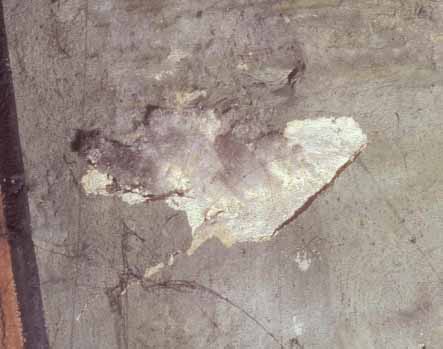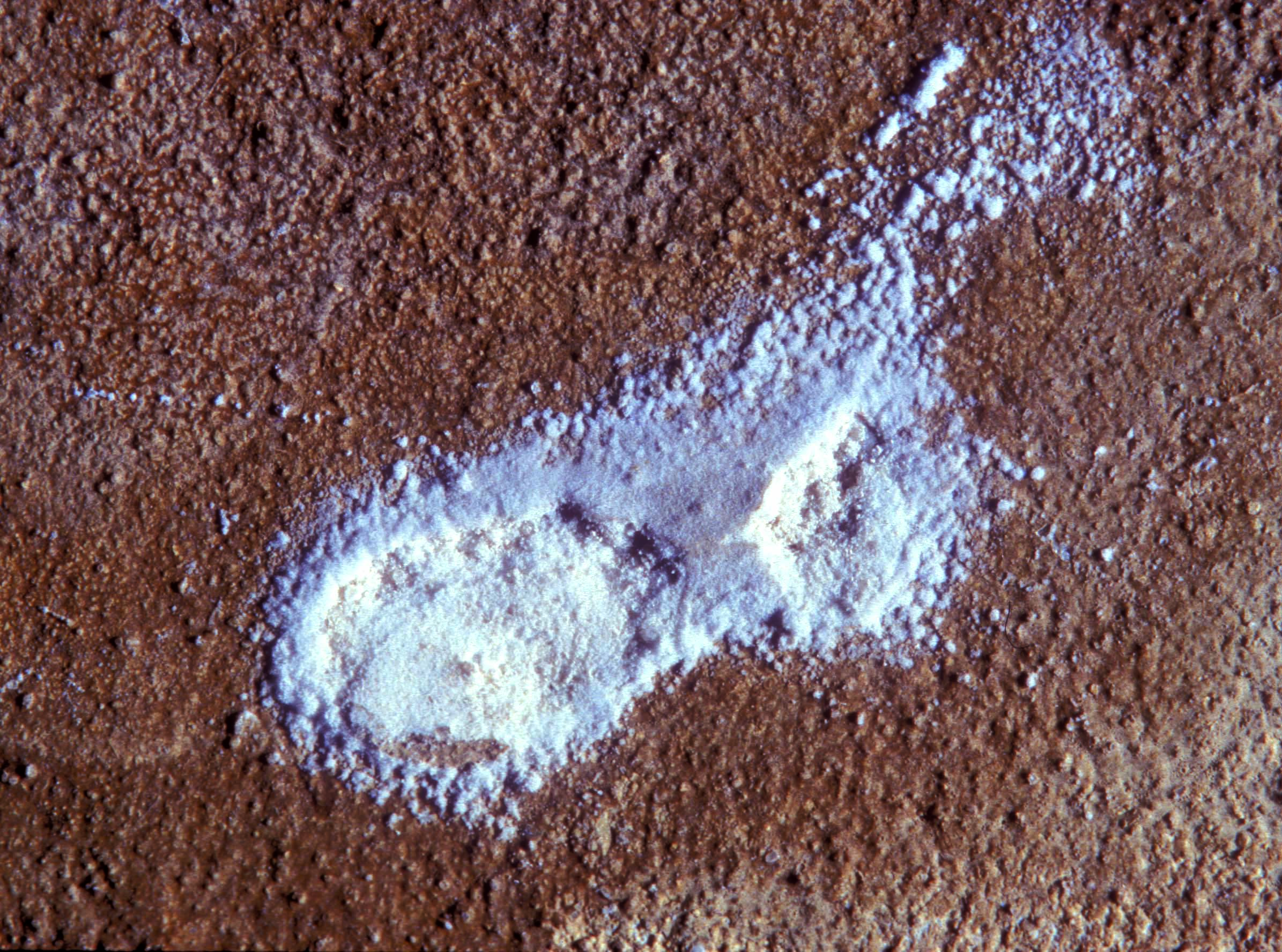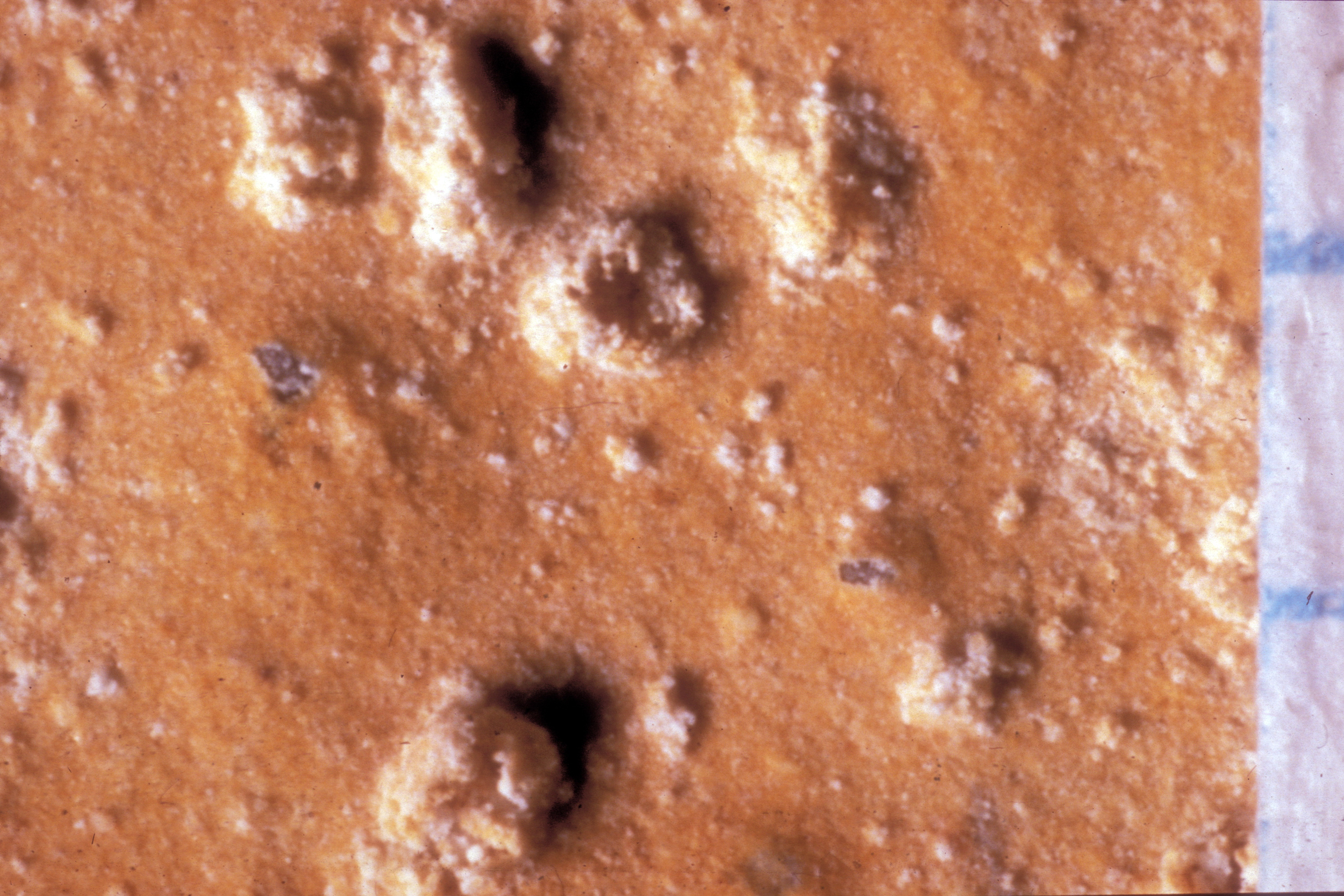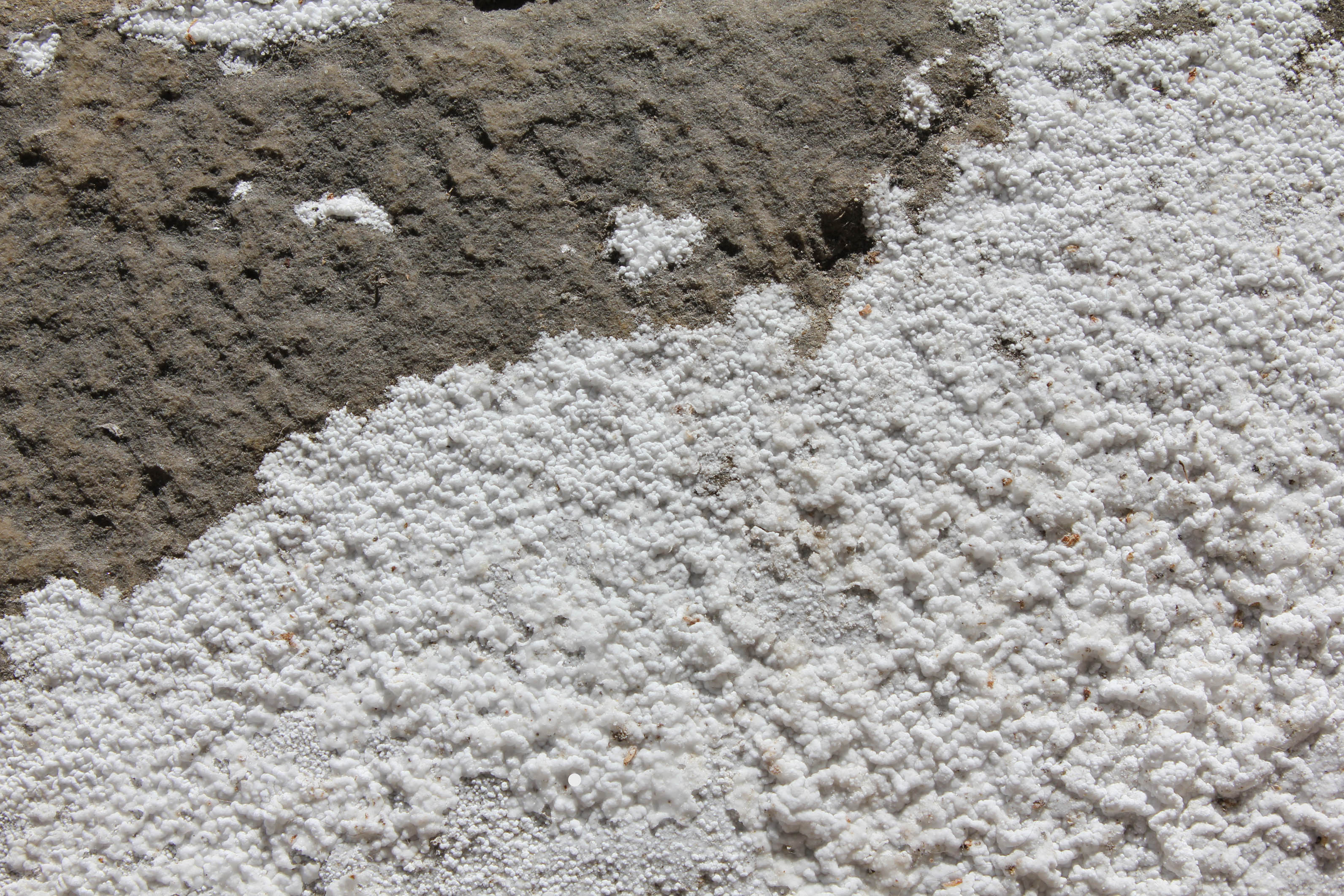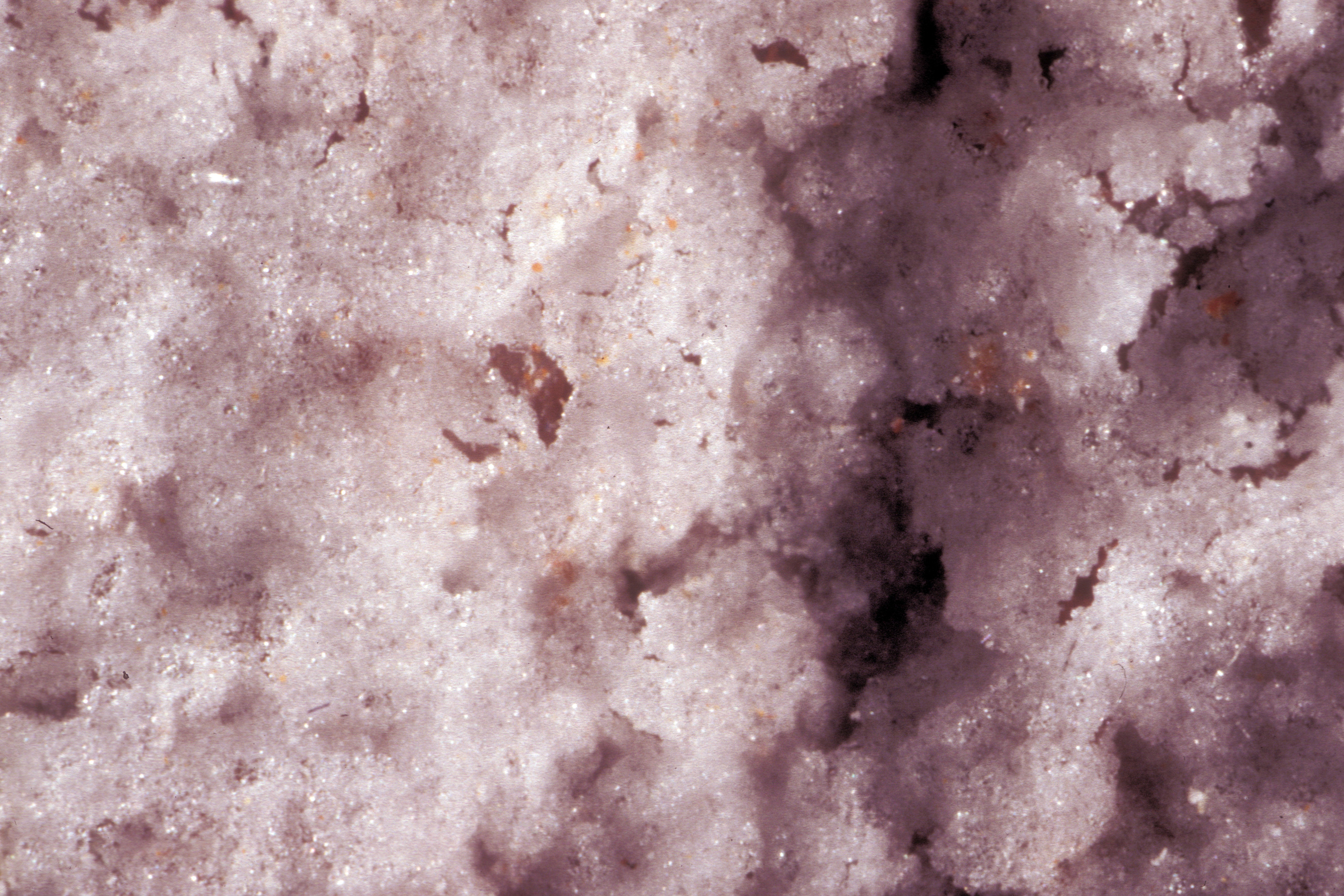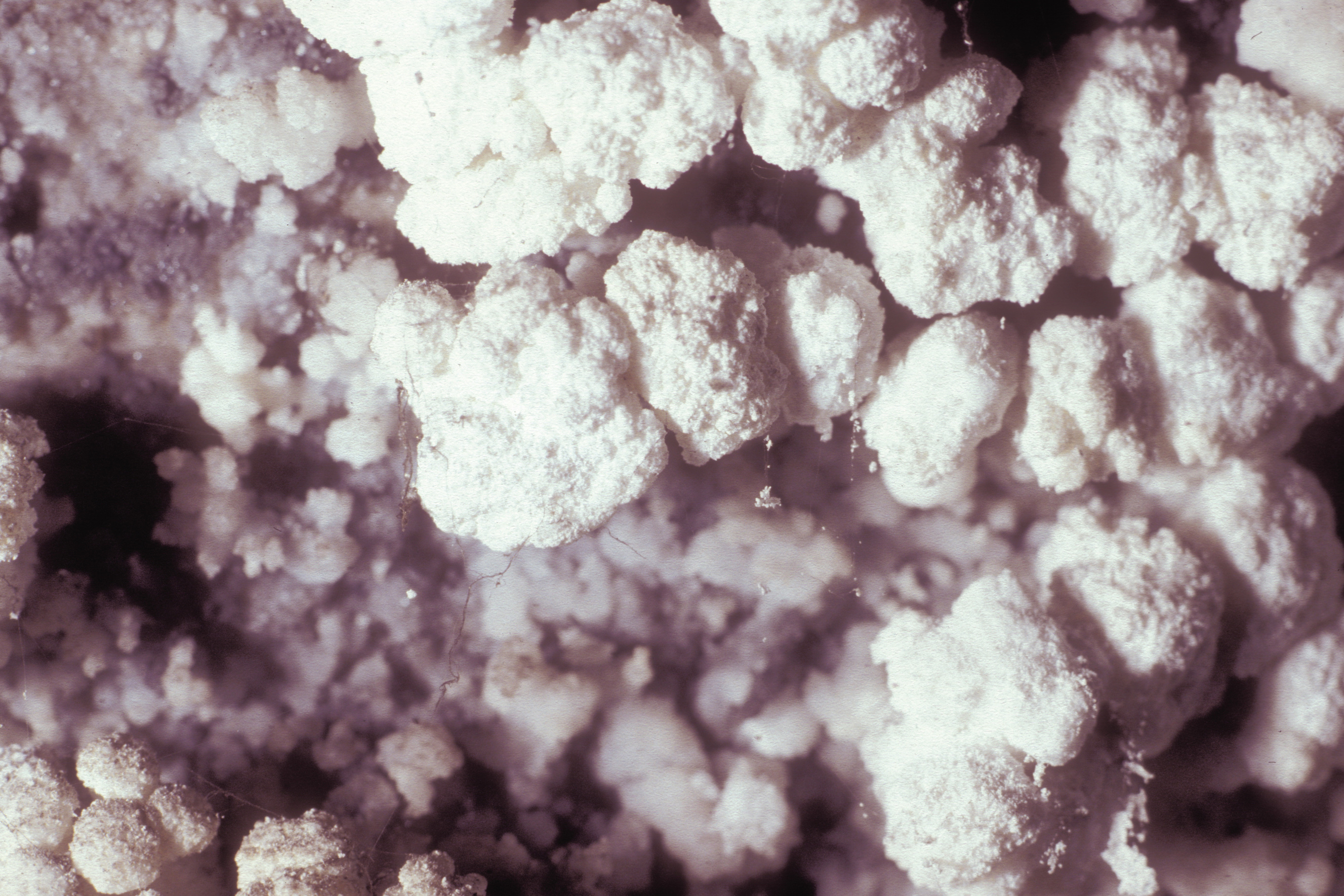Deterioration Patterns
Author: Hans-Jürgen Schwarz
English version by Sandra Leithäuser
back to SaltWiki:Portal
Introduction[edit]
Well documented and well analyzed deterioration patterns are of great importance for the assessment of new damage. This article provides an overview of deterioration patterns, that have been observed in the different material groups.
Material based collections of decay patterns are available for:
Glossary of Salt Efflorescences[edit]
Efflorescences are whitish, powdery or whisker-like crystals on the surface of porous materials. In most cases efflorescences are poorly cohesive and commonly they are made of soluble salt crystals.
On wall paintings, mortar, plaster, ceramic and natural stone, efflorescences repeatedly display certain typical forms. These are briefly characterized, as follows:
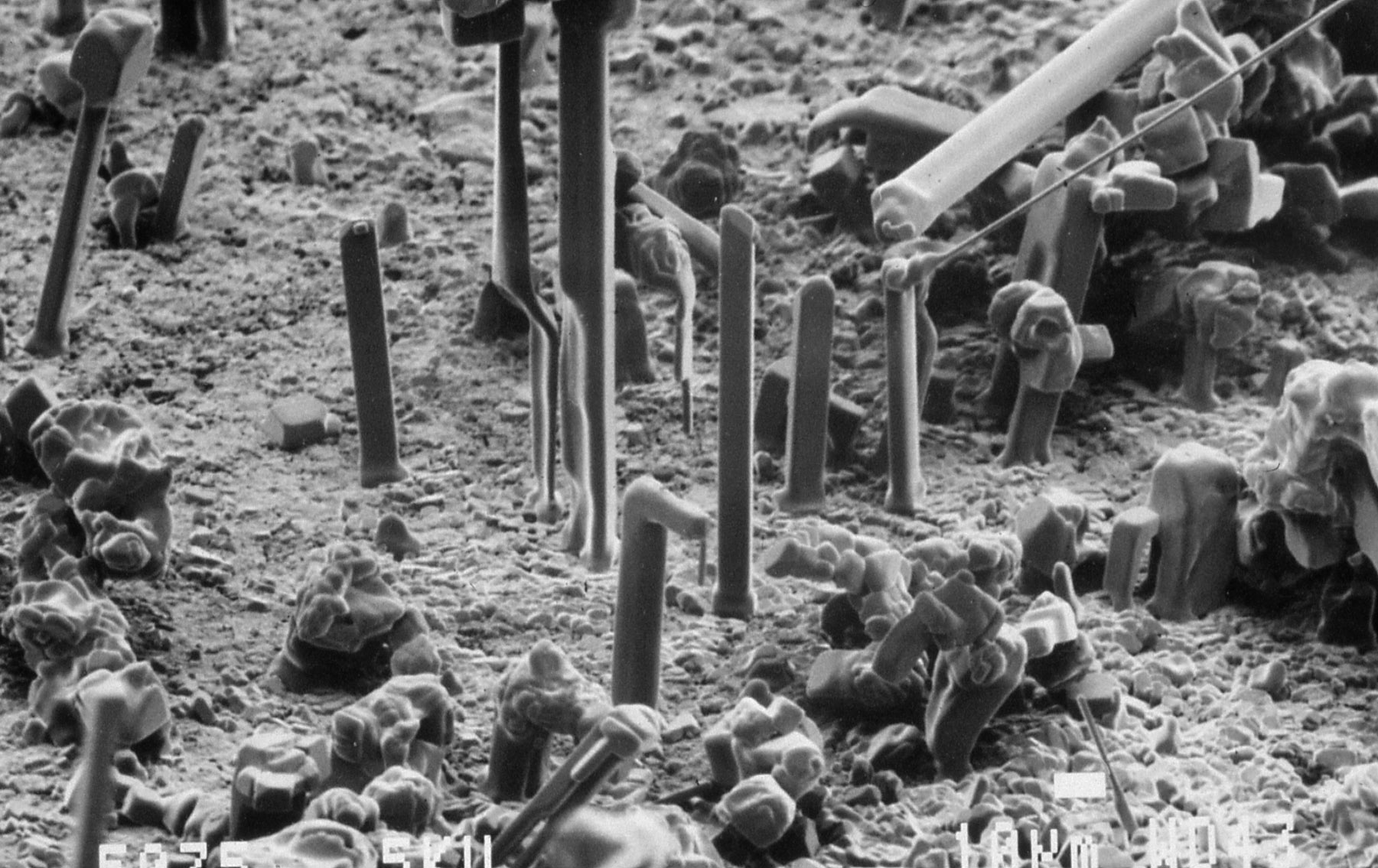
Author: Arnold, Andreas; Zehnder, Konrad
 )
)Whisker: a few microns thick to centimeters long, columnar, often curved crystals. Under specific conditions, crystals, which do not typically exhibit needle-building habits, grow like fine, hair-shaped individuals, the so-called whiskers. Whiskers have been observed in a variety of substances, metals, salts and other compounds. Their diameters are between 0.01 and 100 micron, while their length can reach up to a few centimeters. They grow preferentially in the longitudinal direction, while the growth on the lateral crystal plane is either suppressed or, to some extent, still in progress. Some whiskers accommodate a single, or a few, screw dislocations along their axis, causing a spiral growth at the tip, whereupon the material along the lateral plane has to be transported to the tip. There are also whiskers without screw dislocations, where the preferred growth takes place at the top- caused by a different mechanism. Finally, there are whiskers that do not grow at the top, but at their base, pushing the growing crystal upwards.
Plumose crystals- Fluffy efflorescence: very loose, fluffy or cotton-like efflorescence, usually consisting of bent whiskers.
Acicular crystals-bristly efflorescence: loose columnar whiskers, more or less perpendicular to the surface, 0.1 to several millimeters long, often only visible in raking light.
Powdery efflorescence: white, mealy, loose to dense or fluffy coat. Powdery efflorescences depend on the salt type. Some salts, especially the less soluble ones, such as gypsum, can bloom from the beginning in this very fine crystalline form. When sodium sulfate is present, this form of efflorescence can be a dehydration product of the once water-containing salt.
Salt pustules: separate, loose to compact salt crystals, to about 1 mm diameter.
Salt crust : Crust composed of soluble salts, which develop in the presence of high salt levels, salt aggregates with planar cohesion and of very different thickness (a few microns to mm)
White loose crust (sugary crust): It consists of units that are visible to the naked eye or low magnification as glass-clear crystals. Sugary crusts usually form in a moisture film. However, they can crystallize from a salt efflorescence that takes up water from the surrounding air, then goes into solution and crystallizes again in a dry climate.
Satin Crust: Flat, shiny crust of salt. Thick, shiny crusts of gypsum are formed only by repeated recrystallization and over longer periods of time.
Cauliflower crusts: Crust of white, spherical aggregates- its surface resembles that of a cauliflower. Cauliflower crusts occur preferentially along small defects (e. g.. cracks) on an otherwise relatively dense plaster surface.
Fibrous crust: Crust made of whiskers, densely packed, perpendicular to the substrate. They arise usually on moist substrates.
Habit[edit]
- The crystal habit describes the proportions and existing shape of crystals.
The habit of minerals changes subject to the conditions of their formation.
Due to the crystal structure and the typical mineral and surface combinations, minerals change in their physical appearance. Variously, changes can also be caused by unilateral growth. We describe these mineral forms as follows:
- isometric forms, if the development into all three spatial directions is approximately the same size e.g. for all cubic crystals
- one-dimensional elongated forms: columnar, acicular, hair-like (whisker), fibrous, such as tourmaline, rutile, asbestos
- two-dimensional elongated forms: tabular, lamellar, foliated, scaly, micaceous, e. g. Barite and mica
- dendritic forms occur in the case of an incomplete crystal growth, developing plant-like shapes
Formation of salt crystals, according to Arnold[edit]
According to [Arnold:1992]Title: Salze: Lästige weiße Ausblühungen oder Hauptschadensursache?
Author: Arnold, Andreas the crystal morphology (habit), subject to the moisture conditions, can be subdivided into five groups (see diagram):
the crystal morphology (habit), subject to the moisture conditions, can be subdivided into five groups (see diagram):
a) Multidirectional growth, large crystals with equilibrium shapes are formed on a wet surface, leaving the growing crystals immersed in the solution. The solution covers the whole surface or parts of it as a dense film.
b) A granular crust of isometric crystals forms on a wet substrate, while the crystals are immersed in the solution film and are growing into multiple directions.
c) A fibrous crust forms on a medium moist substrate that is completely covered by the solution film. The columnar crystals grow from their base, and are still in contact with the nutrient solution, as they are uplifted.
d) Columnar, thick whisker-like crystals grow on the humid surface and out of small pools of the solution.
e) Very thin whiskers grow out of "solution dots" on the now nearly dry surface. The result is a fluffy salt efflorescence.
Salts can form their characteristic crystals under undisturbed crystallization conditions and sufficient supply of a nutrient salt solution. These crystals are called idiomorphic. Hypidiomorphic crystals only partially develop their own character, and xenomorphic crystallization means, that the crystal form is not related to the intrinsic shape.
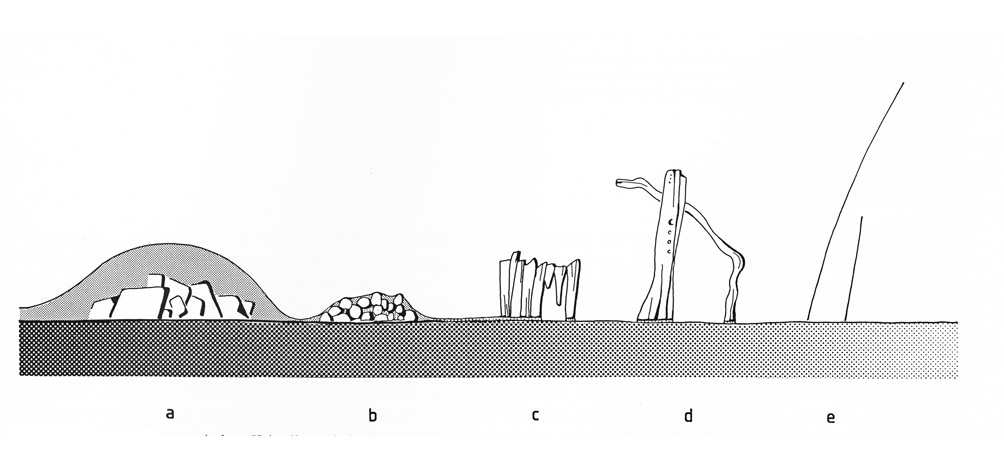
Author: Arnold, Andreas
 )
)
Literature[edit]
| [Arnold.etal:1991] | Arnold, Andreas; Zehnder, Konrad (1991): Monitoring Wall Paintings Affected by soluble Salts. In: Cather, Sharon (eds.): The Conservation of Wall Paintings: Proceedings of a symposium organized by the Coutrauld Institut of Art and the Getty Conservation Institute, London, July 13-16, The Getty Conservation Institute, 103-136. |  |
| [Arnold:1992] | Arnold, Andreas (1992): Salze: Lästige weiße Ausblühungen oder Hauptschadensursache?. In: Jahresberichte Steinzerfall - Steinkonservierung, 2 (), 1-9 |  |
